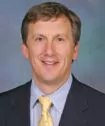In Walter Issacson's 2011 biography of Steve Jobs, Issacson recounts how in 1999, after returning to Apple, Steve Jobs began to interview executives to develop a string of new Apple retail stores. At the time, Gateway Computers was on the verge of bankruptcy after opening its suburban stores, and Dell was succeeding by selling direct to customers without stores. Nonetheless, Jobs correctly predicted that if Window users, in particular, were passing by and found the Apple store inviting enough, Apple would win.
Jobs envisioned that the stores would be minimalistic and offer places for potential customers to try things out. "The stores would impute the ethos of Apple products: playful, easy, creative, and on the bright side of the line between hip and intimidating." When the final prototype retail store was completed in January 2001, the board approved going ahead so that Apple might take its brand to a new level and ensure that consumers did not come see Apple computers as commodity products like those of Dell or Compaq.
In May 19, 2001, the first Apple store opened in Tyson's Corner, Virginia with white counters, bleached wood floors, and a huge "Think Different" poster of John Lennon and Yoko in bed. Many outside experts at the time publically predicted that the stores would fail. But the skeptics could not have been more wrong. By 2004, three years before the introduction of the iPhone and six years before the introduction of the iPad, Apple stores had achieved $1.2 billion in revenue, setting a record in the retail industry for reaching the billion-dollar milestone.
A notable feature of the stores was the Genius Bar. The idea of the Genius Bar surfaced during a retreat in which Apple team members were asked to describe the best service they ever enjoyed. Almost all of the participants mentioned service they received at the Four Seasons or Ritz-Carton hotels. Apple's first five store managers were then sent through the Ritz-Carton training program, and it was there that the idea was born to create something new in the computer retail industry: a cross between a concierge desk and a bar. Staffed with the smartest Mac technical advisors, an oblong table with stools at the back of the store was named the GENIUS BAR.
There are now more than 326 Apple stores. The reported average annual revenue per store is $34 million and the total net sales in fiscal 2010 were reportedly $9.8 billion. By deliberately placing the stores in high traffic areas, the Apple stores were enormously influential in fueling Apple's brand awareness.
On January 22, 2012, following a lengthy and contested process, the United States Patent and Trademark Office granted registered trademark protection to the design and layout of Apple's retail stores. Initially, registration was refused because the claimed mark, a three dimensional configuration, commonly referred to as trade dress, was not -- according to the examiner -- perceived as a source identifier, but only as decoration or ornamentation. In its response, Apple argued that the law was well established by virtue of the Supreme Court holding in Two Pesos, Inc. v. Taco Cabana, Inc., 505 U.S. 763, 765 (1992) that a retail establishment's trade dress can immediately be perceived as a source identifier and is thus capable of protection. In the alternative, Apple argued that if Apple's particular configuration was not immediately perceived as a source identifier, that because of its tremendous success, consumers had come to recognize the configuration as a source of Apple products. To support its claim, Apple submitted hundreds of pages of evidence showing the success of Apple's retail stores, consumer awareness of the configuration, and Apple's marketing efforts to increase consumer awareness of its store designs. After considering the evidence, the United States Patent and Trademark office granted the registration on the basis that the configuration has acquired distinctiveness and as such was recognized as a source identifier.
The mark covers the Apple store's clear glass storefront surrounded by a "panel façade consisting of large, rectangular horizontal panels over the top of the glass front, and two narrower panels stacked on either side of the storefront," and "cantilevered shelves below recessed display spaces along the side walls, and rectangular tables arranged in a line in the middle of the store parallel to the walls and extending from the storefront to the back of the store." See U.S. Trademark Registration No. 4,277,914.
Although Apple did not claim the walls, floors, lighting or other features of the store individually, the placement of the various items are nonetheless considered to be part of the overall mark including the GENIUS BAR described The protection afforded Apple's retail store design and layout serves as a reminder that trademarks need not be limited to words or logos, but may, under the right circumstances, include any number of non-traditional identifiers of source, including appearance, shape, color, sound, and even the layout of an originally designed and successful retail store.
The content of this article is intended to provide a general guide to the subject matter. Specialist advice should be sought about your specific circumstances.
